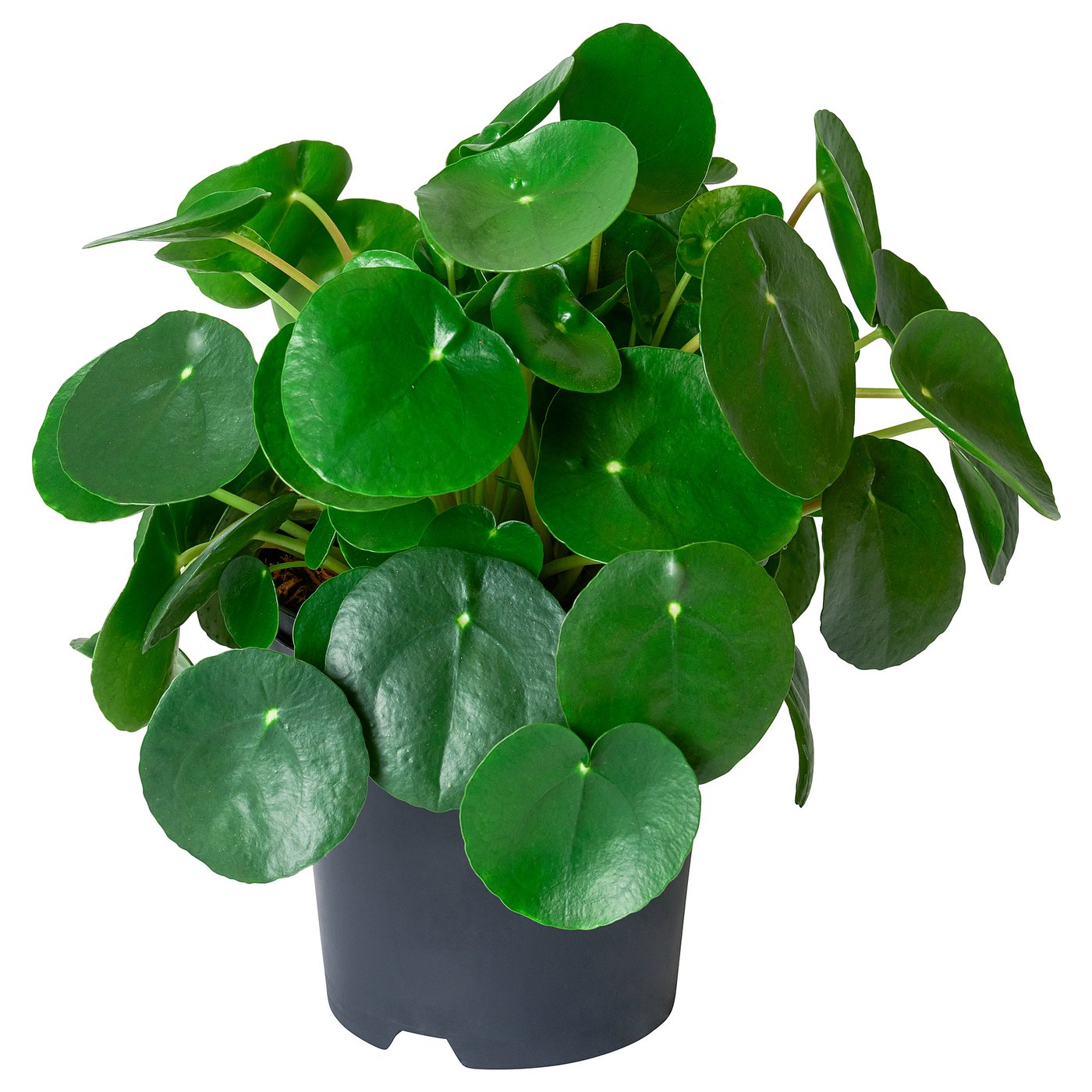
PILEA PEPEROMIOIDES Planta, Pilea IKEA
Normal household humidity. You can mist them once or twice a week if you like. Temperature: Keep away from cold drafts. 15-30°C (59-86°F) in day, 5°C (41°F) at night. Where to buy: Try our list of Rare Plant Shops. Other names: Pilea Peperomioides, UFO plant, Chinese money plant, pancake plant. Common issues:
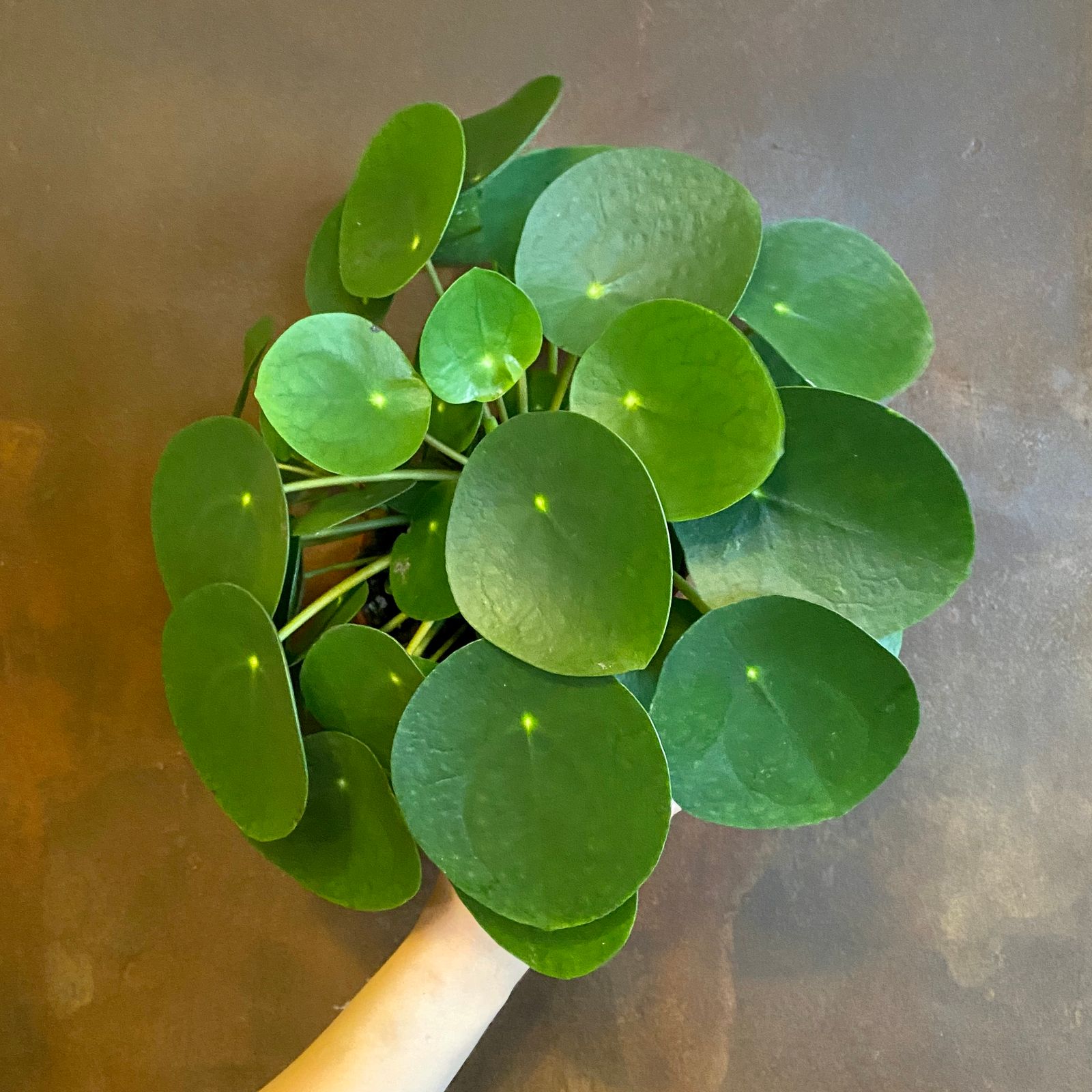
Pilea peperomioides grow urban.
To divide Pilea peperomioides offsets, dig down into the soil at the base of the offset to expose the roots. Then use a sharp pair of needle-nose snips or a clean knife to separate it from the parent plant. Each little offset doesn't have to have many roots, but there should be at least a few there.
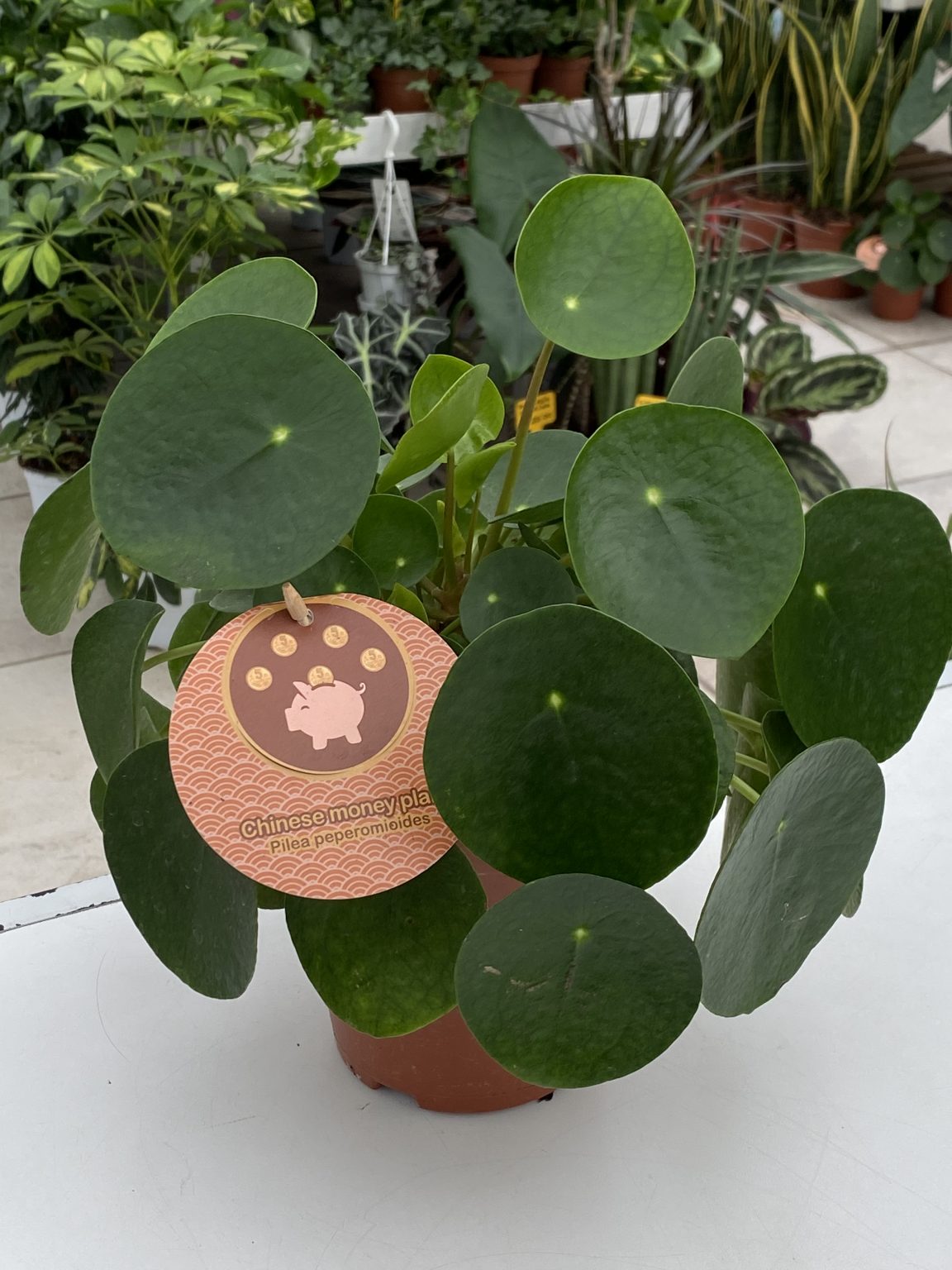
Pilea Peperomioides Vivaio Roma Garden
SUNLIGHT. All three enjoy a very large south facing window but no direct sunlight. Because P. peperomioides is so responsive to the sun and such a fast grower, it has a tendency to send all its leaves in one direction. I've found I need to rotate the plant 2-3 times a week to avoid a slanted stem.
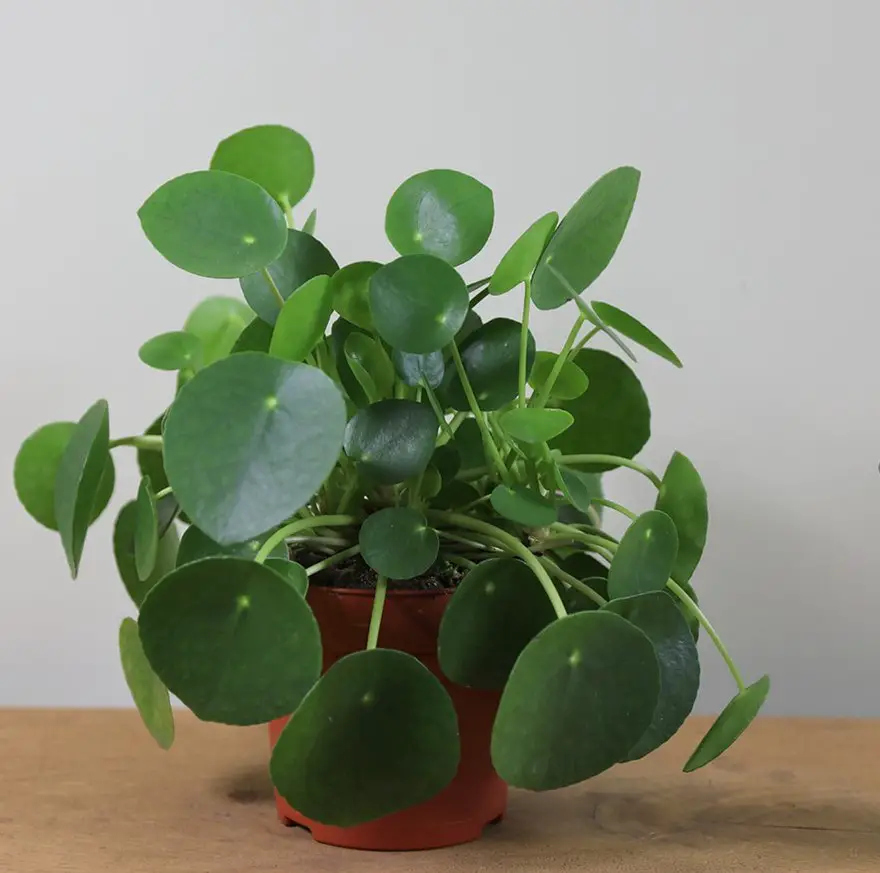
Características de Pilea (Pilea peperomioides) Consejos para mi huerto
The short answer is yes, you can. As a tropical plant, Pilea Peperomioides loves humidity environments, and terrariums can create the perfect habitat. However, there are a few things you should learn before you embark on such a project. The two types of terrarium First, you should know that there are two types of terrariums: closed and open.

Pilea Peperomioides cuidados y reproducción Plantas y Deco
What is the Pilea peperomioides? General care tips for a Pilea peperomioides Pilea light needs How to water and fertilize the Pilea peperomioides Is the Pilea peperomioides toxic? Show 2 more items With its charming UFO-shaped leaves and elusive but cute flowers, the Pilea peperomioides makes a great addition to any indoor garden.

Découvrir 48 kuva pilea peperomioides flor Thptnganamst.edu.vn
Pilea peperomioides do best in all-purpose potting soil using 50% soil, 40% cactus mix, and 10% perlite. Water the plant once a week and provide bright indirect light. The temperature should be between 60°F to 86°F (16°C to 30°C). An average humidity between 40-50% is best. Fertilize using a liquid fertilizer at 1/4 strength in the growing season.

Pilea peperomioides, comment le cultiver ? Osez Planter Ça Pousse
Quick facts. Easy-to-grow houseplants suitable for most indoor places. Several species are available, with attractive foliage. Tolerant of a range of indoor temperatures. Grow best in bright light, but not direct sun. Some prefer higher humidity. Avoid overwatering.
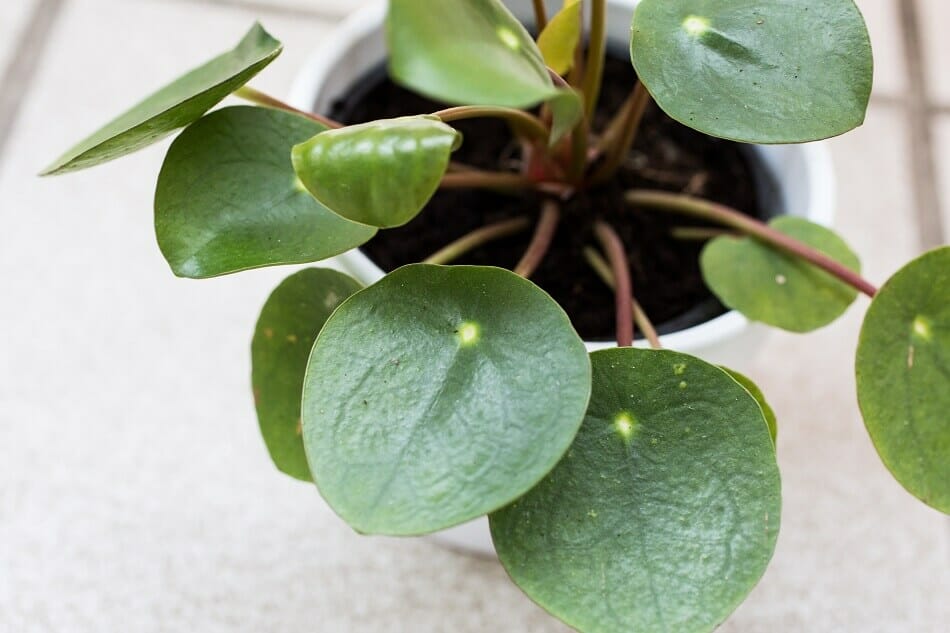
Ultimate Guide to Pilea Peperomioides Plant Care Petal Republic
Pilea peperomiodes, also known as the Chinese money plant, Chinese plant, missionary plant, pancake plant, the pass-it-along plant and the UFO plant, has a dome of beautiful and unusual leaves that look like small lily pads. The Chinese money plant hails from southern China, and was first brought to the UK at the start of the twentieth century.

Pilea Peperomioides Plant Brittanica
Pilea Propagation in Water. Cut the offset away from the mother plant with a clean, sharp knife, doing your best not to damage any roots. Place the baby into a container of water. You might have to get creative with your container to keep the whole plant from falling in the water. Only the stem and any roots should be submerged.

Pilea peperomioides roślina Pieniążek 25cm CocaFlora Amazing Plants of The World
Pilea Peperomioides Benefits. It's really (really) easy to care for. Truly one of the easiest going and good natured houseplants around. The plant grows fast. This plant really gets a move on and when conditions are right, growth is rapid. You can propagate more very easily. One of the easiest houseplants to multiply.

Planta De Panqueque En Flor Con Flor Pilea Peperomioides Foto de stock y más banco de imágenes
Wait until the pup is big enough to survive and grow its own root system - usually when it's about 5 to 7 cm high. Then, gently dig the first 2 to 4 cm of soil around the roots. Take a sharp knife and make a clean cut to separate it from the mother plant. Make sure to keep some of the roots attached to the pup.
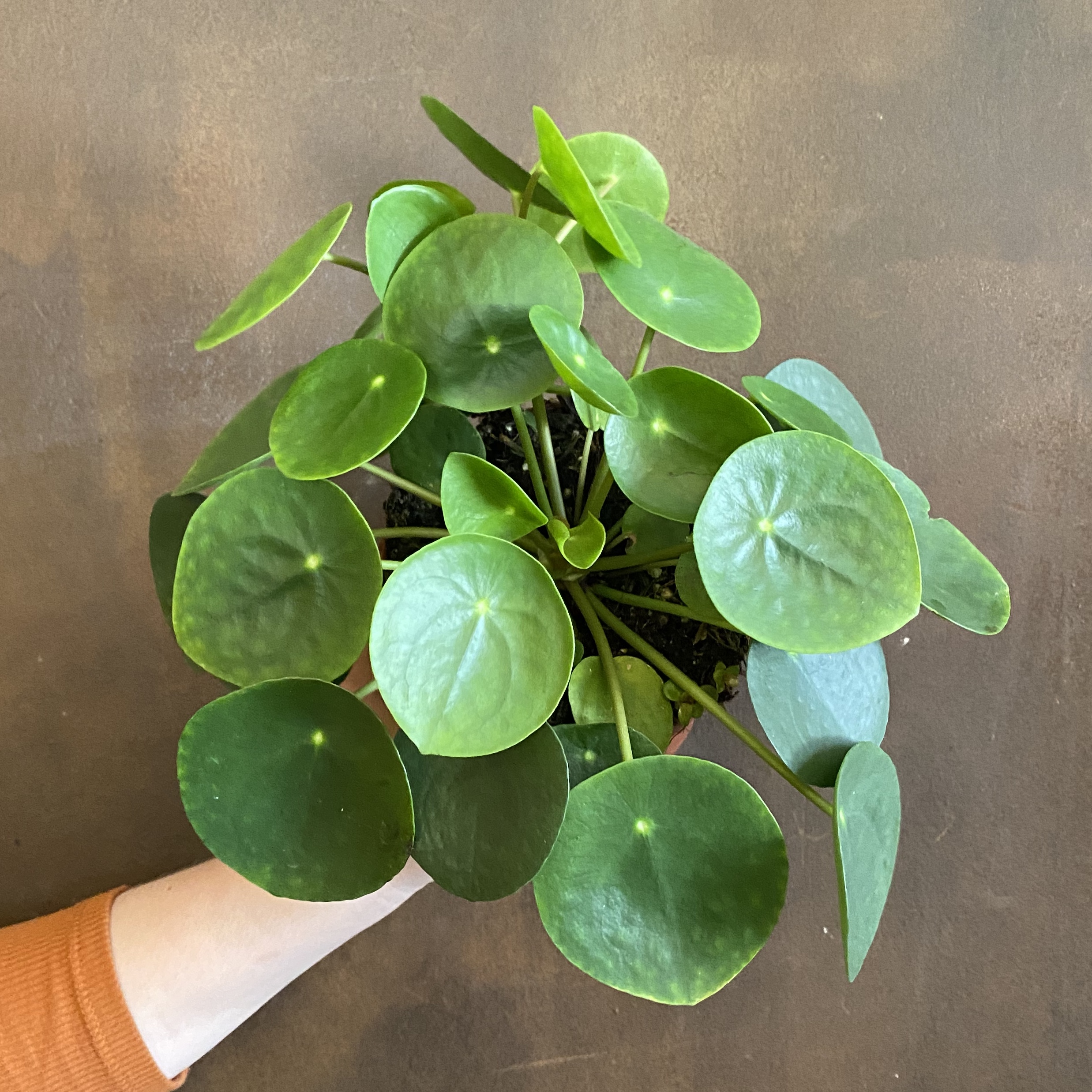
Pilea peperomioides (12cm pot) grow urban.
Pilea, Pilea peperomioides: "Pass-along Plant" As common as a Kardashian, photogenic Pilea houseplants dominate the conversation on Instagram. What makes this friendly, pancake-leafed houseplant so popular? Those pancake leaves, for starters. What could look cheerier than flat, smooth, round disks bobbing at the end of politely arched stems?

Pilea peperomioides Planthiza
Pilea peperomioides|missionary plant/RHS Gardening Houseplants Pilea peperomioides missionary plant An upright, evergreen perennial to 30cm or more, with fleshy, rounded, long-stalked mid-green leaves to 10cm in length; tiny pale green flowers sometimes tinged pink Join the RHS Become an RHS Member today and save 25% on your first year < >

Pilea Peperomioides en flor Plantas
Pilea peperomioides, commonly referred to as the Chinese money plant, is a small plant with coin-shaped leaves. Other names for this plant include the UFO plant, friendship plant, or missionary plant. While it's native to China, this symbolic and beneficial plant can now be found in homes worldwide, including those in colder climates.

Cuidados de la Pilea Peperomioides Infojardineria.es YouTube
Pilea peperomioides, often referred to as the pancake plant, Chinese money plant, coin plant, or UFO plant, is a popular houseplant thanks to its attractive coin-shaped foliage and ease of care. This flowering perennial in the nettle family (Urticaceae) is native to southern China, growing naturally along the base of the Himalayan mountains.

Pilea peperomioides Chinese Money Plant Succulents Australia Sales
Pilea Peperomioides, also known as Chinese Money Plant, UFO Plant, Missionary Plant, Pancake Plant, or just Pilea (the shorter version of its scientific name), is an Asiatic evergreen perennial, succulent, and flowering plant.It belongs to the nettle family Urticaceae, native to Yunnan and Sichuan provinces in southern China.